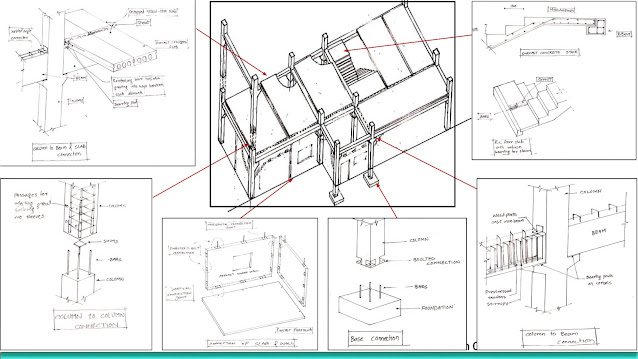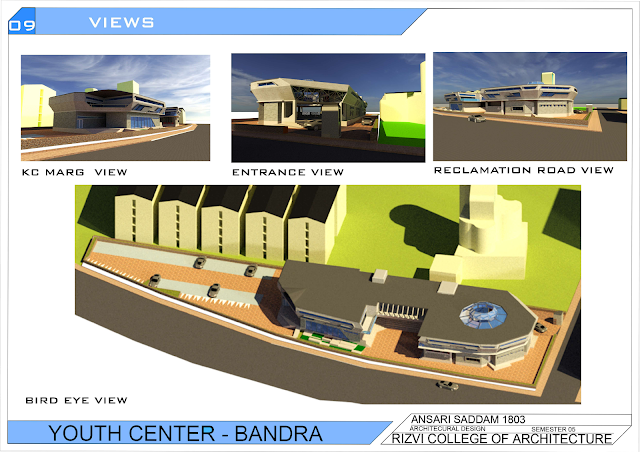Precast Concrete Structure
Precast Concrete Structure
Question :Write advantages and disadvantages of precast concrete technology in developing countries like India?
● Rapid economic growth and limited availability of affordable land have restricted the horizontal mode of construction leading to vertical construction in most of the Indian cities. Urban India is mostly marked by tall buildings that are being built.
● Due to the economic slowdown and some governmental interventions, these building projects are seeing significant time and cost overrun, ultimately impacting the end-user. As these market pressures rise more and more, real estate developers are considering to adopt emerging technologies to compensate for these construction issues.
● Indian construction industry is undergoing a paradigm shift from traditional methods of construction to modern methods of construction. Precast technology is one such move which is expected to enhance the productivity of the construction process, thereby, optimizing the requirement of resources on the site, reducing waste generation and resulting in a faster delivery of the projects. While internationally precast technology is considered as a mature technology, in India, it is not widely utilized, despite the advantages.
● One of the major reason for not accepting the precast technology by the stakeholders is the inability to ascertain the benefits to a project Use of precast technology is not understood to the core extent, and sometimes, it is viewed as a costlier technology.
ADVANTAGES OF PRECAST
● SUSTAINABILITY: Precast is perfect for today's focus on preserving resources and protecting the environment through sustainable building practices. It's a perfect Green Building product Precast reduces overall life cycle impact on environment compared to other methods as it has lower wastage and high potential to recycle waste. Lesser waste generated due to planned construction and the process is unaffected by adverse climatic conditions such as rainfall, snowfall and heat.
● ENHANCES SAFETY: Precast products eliminate many of the dangers associated with on-site construction by providing a controlled, off-site fabrication environment. Precast reduces the amount of wet trade work on site, making them cleaner, tidier and safer. Greater project certainty and safer working environment.
● QUALITY & DURABILITY: The advantage of prefabricated method is the celerity by which the construction process takes place. Rapid urbanization, tremendous shortage of skilled labor and the need for having hassle-free construction methods is a trigger to offer prefab technology to build homes faster. The controlled plant environment has offers easy verification of quality and a dedicated workforce. This means high-quality product can be manufactured every day, regardless of whether. The low water-cement ratio used in precast concrete creates a denser product that does not allow penetration of chlorides and other harmful elements as easily as field-placed concrete.
● LOWER PRODUCTION COSTS: The main purpose of precast concrete construction is to reduce the cost of the formwork. Several components can be produced in the same formwork, i.e. mould. And of course, large batches are advantageous. Although mould types suited to the method of production (e.g. rigid moulds with few fold-down parts) demand a design approach that suits the production, this does lead to high mould reuses.
● INTEGRATED PROJECT DELIVERY: Structural precast components can be erected in a relatively short period of time because they interlock to support one another. Simpler installation requires fewer crew members, which means fewer personnel to manage, fewer trades to pay and fewer trade-related delays.
● OPTIMIZATION & FLEXIBILITY: Precast plants optimize the resource utilization, and produce an improved quality product with reduced tolerances, thinner sections, and engineered solutions. Also, it offers flexibility of space planning by allowing for longer spans which create larger open floor plans and increased flexibility in design. For architects, it can offer variety of different profiles.
● SPEED TO MARKET: The advantage of precast us that faster erection reduces the overall construction schedule and overhead costs Compressed schedules, fewer on-unite trades, and eliminating weather delays add up to reduced project costs.
DISADVANTAGES OF PRECAST
● HIGH CAPITAL COST: A large amount of resources must be invested initially to set up a precast concrete plant. Sophisticated machineries are expensive and require heavy investment. Precast concrete is mainly used in construction of high-rise buildings and flats, which are at least 5 storey high. Precast concrete is also utilized in construction of housing estates where the design of houses is uniform. Other projects where precast concrete is suitable are large stadiums, halls, factories, warehouses, airports and hangars. The scale of the construction projects using precast concrete must be large enough to ensure sufficient profit to offset the initial capital cost. As the precast system includes cost of high technological construction, maintenance and transportation of precast technology, it is not understood to the core extent, and sometimes, it is viewed as a costlier technology.
● LESS EXPOSURE: The lack of standardization, certification and testing facilities, contractual issues and taxation, non-availability of tools, technology and equipment, limited knowledge and lack of government incentives and promotion are some of the major challenges faced by the precast concrete construction industry in India. Despite the well-documented benefits, the use of precast concrete in Indian construction sector is limited. One of the major reason for not accepting the precast technology by the stakeholders is the inability to ascertain the benefits to a project.
● INSTALLATION: In most cases, mobile cranes are required to install large pieces of precast concrete. When planning a project that involves this material, it is important to plan ahead and account for crane rentals.
● TRANSPORTATION: It can be complicated to move precast concrete to a jobsite. The weight of the concrete can do damage to many types of trucks, and it is important to keep it stable so that the concrete pieces are not compromised. Special transportation methods, such as picker trucks, are often required.
● MODIFICATION: It is extremely difficult to modify a piece of precast concrete if it does not fit its placement. In many cases, if the precast concrete component is not a perfect fit, the proper materials must be ordered and brought in. Without careful planning, this can cost more money and take much more time.
Question :
List down situation where precast concrete technology is preferred over conventional cast in situ RCC system?
It can be used when you want reduce the overall budget of the structure as precast concrete is much more cost effective over cast in situ. As precast is casted in factories there is minimal wastage and Labour is reduced which cuts the overall cost.



















Comments
Post a Comment